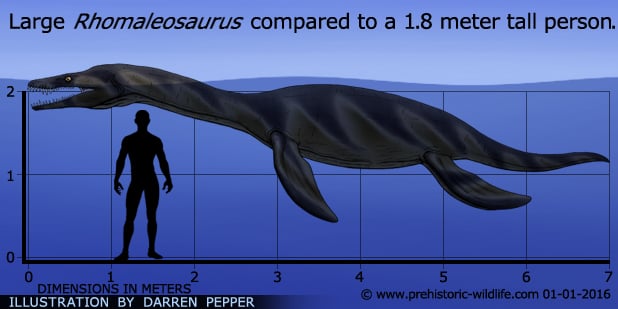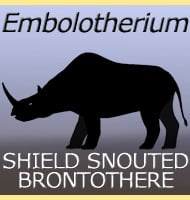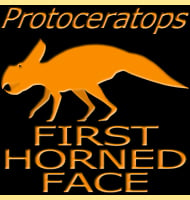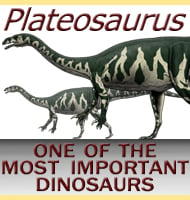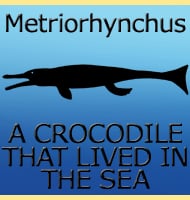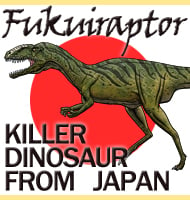In Depth
Classification and naming history of Rhomaleosaurus
The first remains of Rhomaleosaurus were originally named by Alexander Carte and W. H. Bailey as a species of Plesiosaurus, P. cramptoni, which was in honour of Sir Philip Crampton, an anatomist who brought the remains to wider public attention. In 1874 Harry Govier Seeley found the remains to be very different from Plesiosaurus and so erected them as the new genus of Rhomaleosaurus. However this was the beginning of a naming confusion with another marine reptile called Thaumatosaurus (‘wonder lizard’) that had been named by Christian Erich Hermann von Meyer in 1841, and described in more detail in 1856. The source of the problem was not von Meyer himself however but the naturalist Richard Lydekker who in 1889 insisted that the remains attributed to Rhomaleosaurus were in fact the same as those of Thaumatosaurus. Both Govier and Lydekker insisted that the other was in the wrong but no further clarification happened until over a hundred years later.
1910 saw the attribution of a new set of remains by Fraas that were recognised as belonging to either Thaumatosaurus or Rhomaleosaurus, although Fraas did go for the full name of Thaumatosaurus victor. This led to other palaeontologists recognising the name Thaumatosaurus, but ultimately time and further study would fall upon the side of Govier. You see, while Thaumatosaurus was named before Rhomaleosaurus, it was named upon very partial remains that today are considered to be too poorly preserved to identify a specific genus. For this reason Thaumatosaurus is today considered to be a nomen dubium, and is why later remains attributed to it were re-named as new species of Rhomaleosaurus.
Rhomaleosaurus has had a greater number of remains attributed to it than what it does today, mainly because the new species created from remains that were originally attributed to Thaumatosaurus are now thought to represent different pliosaur genera. Rhomaleosaurus victor has now become Meyerasaurus victor, while Rhomaleosaurus megacephalus has been included with Eurycleidus, although the possibility has been recognised that it yet represent its own genus. As you can see in the case of Meyerasaurus the original species name has been retained in created the type species of the genus. This is standard procedure when elevating a species to its own genus level, and helps future researchers track the origins of new and shuffled species and genera.
In addition to the above re-shuffling two more of the existing Rhomaleosaurus species have had their validity questioned. In 2007 Adam S. Smith considered the possibility that R. propinquus was synonymous with R. zetlandicus. R. zetlandicus itself along with R. thorntoni were questioned as being synonyms to the type species R. cramptoni in 1996 by Cruickshank. Later study in 2008 by Adam S. Smith and Gareth J. Dyke has since come to the conclusion that the current four species are actually valid.Rhomaleosaurus as a marine reptile
Rhomaleosaurus is the type genus of the Rhomaleosauridae, a group of long necked pliosaurs that includes others such as Macroplata, Yuzhoupliosaurus, Maresaurus as well as Eurycleidus and Meyerasaurus that were mentioned above. At up to seven meters long Rhomaleosaurus was a large pliosaur for its time, although other marine reptiles such as the ichthyosaur Temnodontosaurus grew larger.
The predatory nature of Rhomaleosaurus is an interesting subject as even though it was a large pliosaur (for the early Jurassic at least), the teeth and long neck are more suited for capturing smaller prey like fish. The teeth themselves are not especially large but seem to intermesh so that they were better suited to gripping small prey rather than tearing chunks out of larger animals. Aside from fish, prey could include creatures like cephalopods, specifically squid, as well as possibly small marine reptiles, especially small juveniles of larger forms.
Aside from the overall robust construction of the skull, special attention has been paid to the nasal cavities. It’s thought that marine reptiles like Rhomaleosaurus may have been able to ‘sniff’ the water to detect traces of things like blood in the water around them. This ability may have been so sensitive that predators like Rhomaleosaurus could not just smell it, but identify its direction so that it would have been able to investigate the source. Overall such an ability would allow marine reptiles to find prey before it was within visual range, considerably increasing their effectiveness as marine predators.
Rhomaleosaurus seems to have been limited to the waters of early Jurassic Europe with all currently known specimens coming from England. Most fossils of Rhomaleosaurus are from the Whitby Mudstone Formation in the county of Yorkshire, with an exception being R. thorntoni which is from the county of Northamptonshire. Most of the pliosaurs related to Rhomaleosaurus are known from Europe except for Yuzhoupliosaurus which is known from China, something which suggests that Rhomaleosaurus and others may have had a wider distribution.
Further Reading
– Note on some generic modifications of the plesiosaurian pectoral arch. – Quarterly Journal of the Geological Society of London 30:436-449. – Harry Govier Seeley – 1874. – Functional Anatomy of the Head of the Large Aquatic Predator Rhomaleosaurus zetlandicus (Plesiosauria, Reptilia) from the Toarcian (Lower Jurassic) of Yorkshire, England. – Philosophical Transactions B vol 335. issue 1274 – Michael Alan Taylor – 1992. – Anatomy and systematics of the Rhomaleosauridae (Sauropterygia, Plesiosauria). – Ph.D. thesis. – University CollegeDublin. – Adam S. Smith – 2007. – The skull of the giant predatory pliosaur Rhomaleosaurus cramptoni: implications for plesiosaur phylogenetics. – Naturwissenschaften – vol 95, issue 10 pp975-980 – Adam S. Smith & Gareth J. Dyke – 2008. – Osteology of Rhomaleosaurus Thorntoni (Sauropterygia: Rhomaleosauridae) from the Lower Jurassic (Toarcian) of Northamptonshire, England, by Adam S. Smith and Roger B. J. Benson – Monograph of the Palaeontographical Society, London, 168 (no. 642) (Darren Naish). 2014.- Osteology of Rhomaleosaurus Thorntoni (Sauropterygia: Rhomaleosauridae) from the Lower Jurassic (Toarcian) of Northamptonshire, England, by Adam S. Smith and Roger B. J. Benson – Monograph of the Palaeontographical Society, London, 168 (no. 642) (Darren Naish). 2014.
